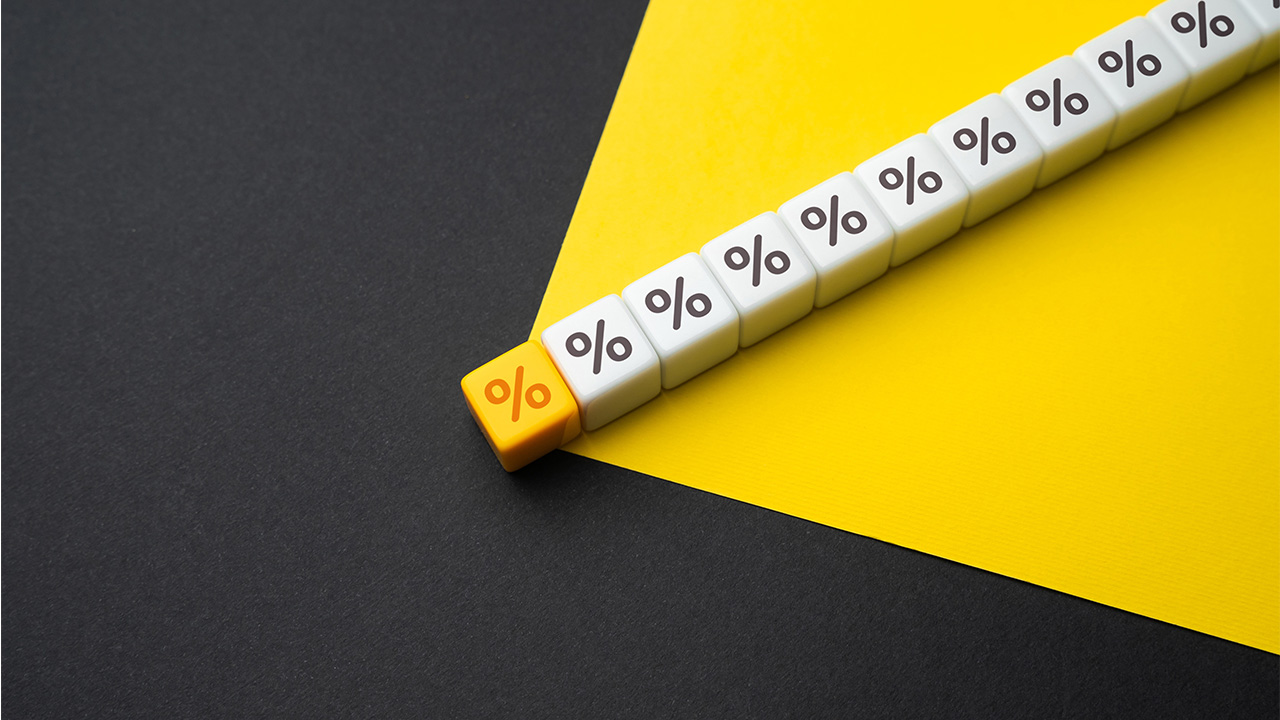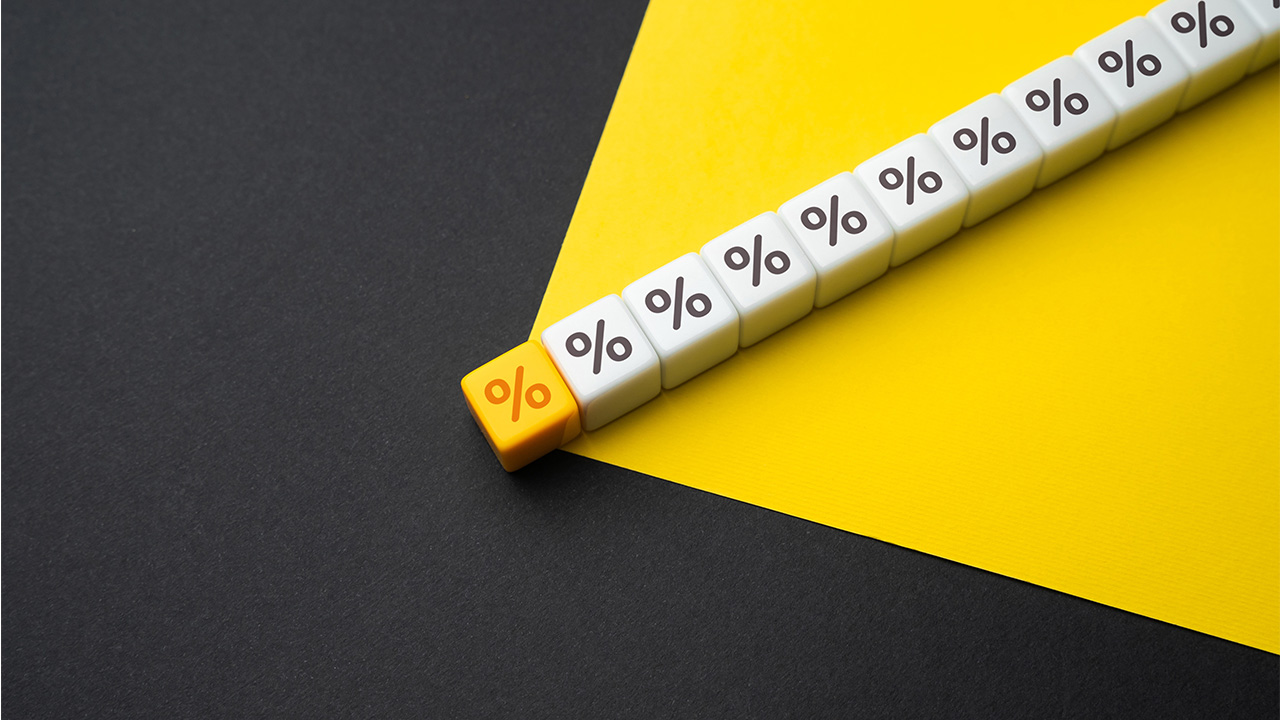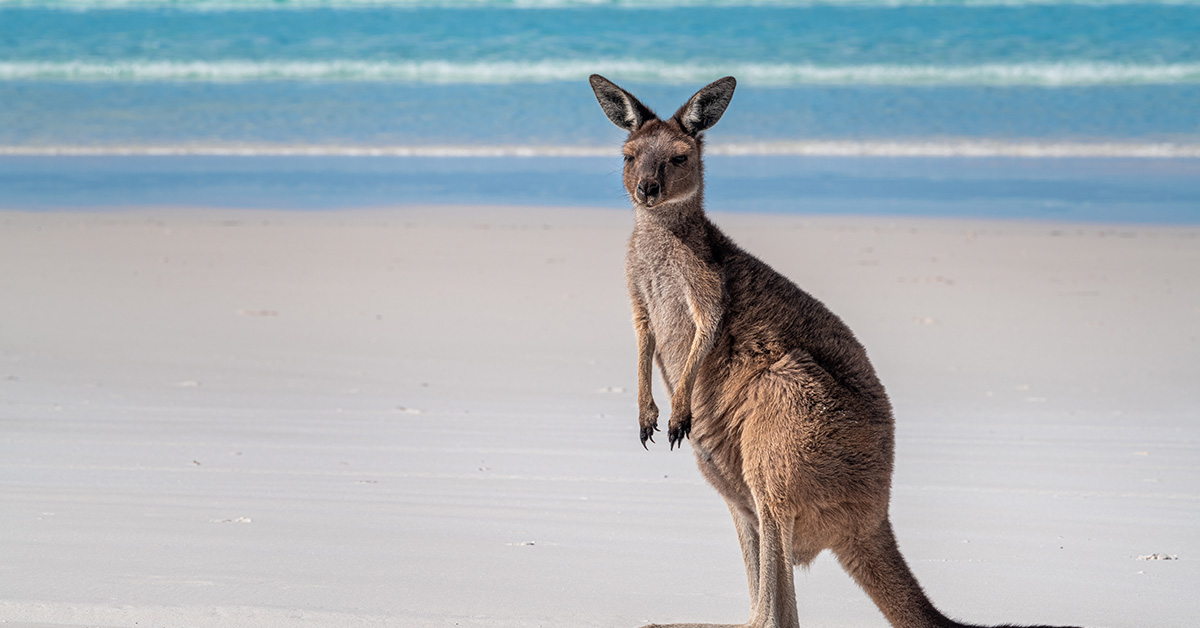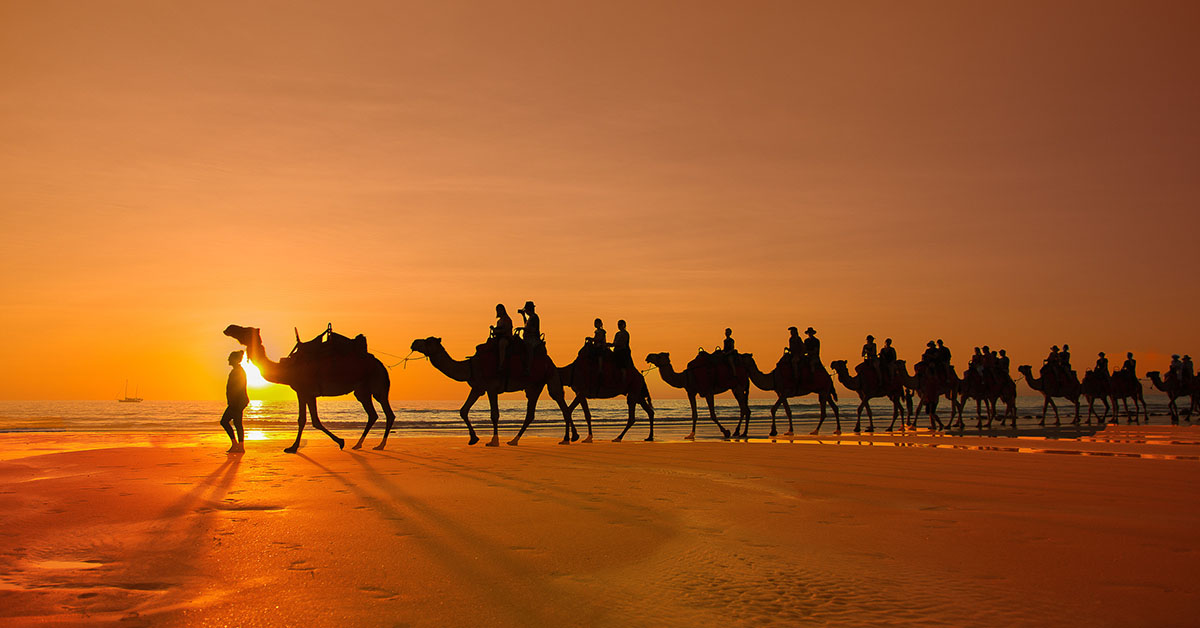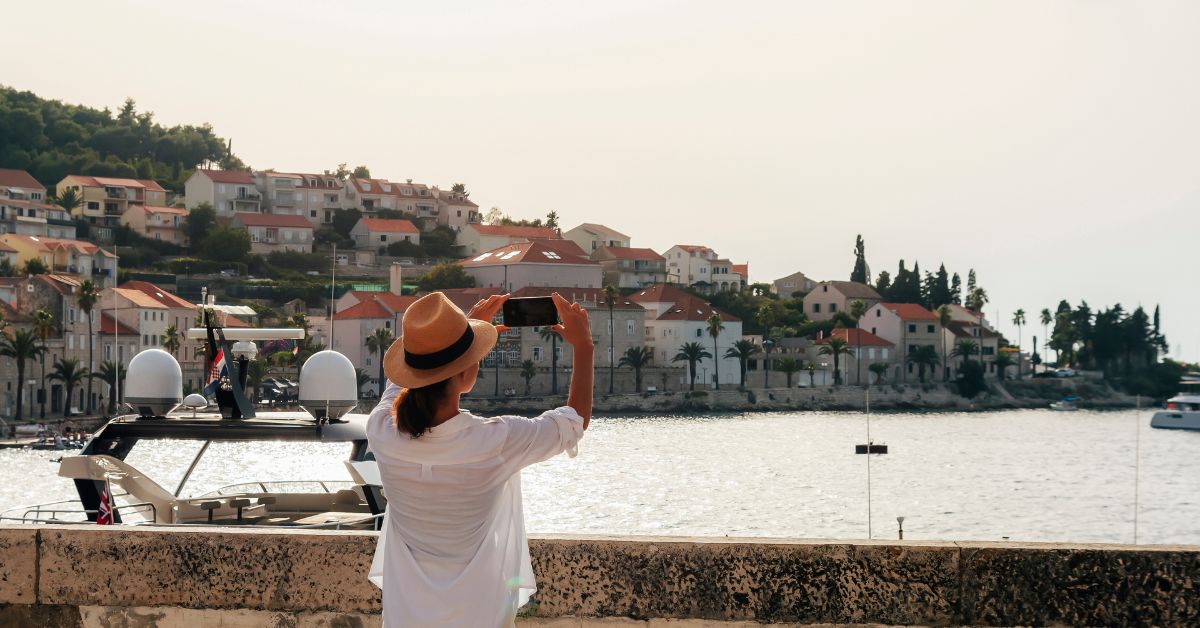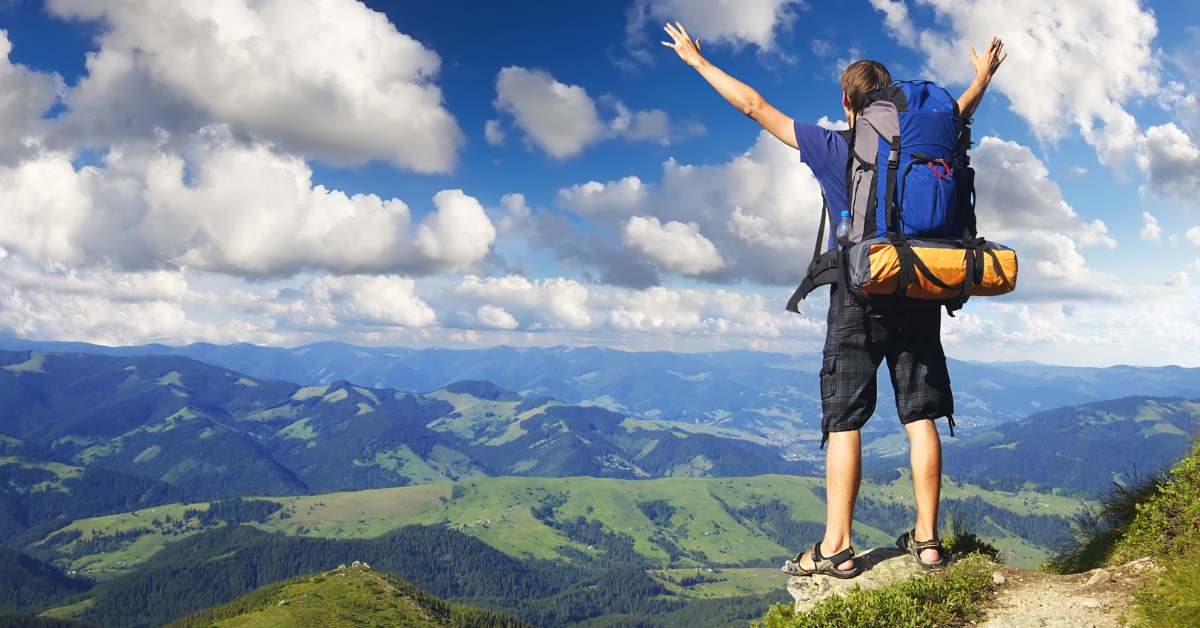Last week, it was all about increasing your audience size by 10%. The audience size, being those people that are just aware of your business in some way. This week, it’s all about turning that increased awareness—that bigger audience—into more engagement. What percentage of those people that are aware of your business in some way actually take some sort of action, some sort of engagement, to show that they’re interested in what you do?
So that’s your engagement rate, and this week it’s all about increasing your engagement rate by that 10%. Why? Because having an audience, or increasing your audience, is great. It gives you more to work with and more opportunities, but an audience that doesn’t ever really engage isn’t worth a great deal.
What is Real Engagement & Why Does It Matter for Your Tourism Business?
We need to focus on engaging with those people that are interested in our business in some way and inspiring them to take action. But not all engagement is equal. There is a bit of a misconception out there that likes and shares are important on social media, but the truth is it’s a vanity metric. It doesn’t really mean much. Likes don’t pay the bills. Bookings pay the bills. Engagement gets you one step closer to bookings, and it’s bookings that pay the bills.
So what we’re looking for isn’t that surface-level engagement. We’re looking for real intent-driven actions. We’re talking about things like email signups, downloads of your brochures, of your website, people watching your videos all the way through to the end, or even direct inquiries. That’s an obvious one. Things like people that pick up the phone or send you a DM—a direct message on social media. Clicks on your virtual tours online or your menus and things, or quiz completions. These are things where people are actually taking a little bit of time out of their day to engage with your business in some way, because these are clear signals of interest. It’s providing warmer leads, which is important for the next stage, and it makes it a lot easier to turn that engagement into profitable bookings.
So what we’re aiming for is a 10% increase in real, tangible things, like 10% more website visitors that download your e-guide or an increase in your open rate by 10% by having better subject lines. That’s what we’re looking at today. So that’s what engagement is. How do we cultivate it? More importantly, how do we boost it by 10%? As always, we’re going to look at a couple of different options for online and for offline as well.
How to Boost Website Engagement by 10% for Tourism & Hospitality?
Let’s start with online and your website, because that’s probably the easiest place to really see a big 10% difference in your engagement rate.
First up, have a look at your user experience, or UX. Your website needs to be fast, intuitive, mobile-friendly. One of the things that you can look at is if you can increase your page load speed by just one second. It has a huge impact on the usability of your website. People these days, they’re not patient. They’re not going to wait for your website to load. So every one second increase in load time has a huge impact on your conversion rates, on your website, on how long people stay there. If your website loads too slowly on that first interaction, you’re going to see a huge bounce rate, which is people that come to your website and then disappear again, having never done anything because they just get impatient.
If the website takes far too long to load, they don’t hang around to wait for it. So if you can focus on increasing your page load speeds by just one second, or something like streamlining your navigation so that they can find the information they’re looking for a lot quicker, you’re going to see your engagement rates increase. That engagement is spending more time on your website, looking at more of your photos, reading about more of your services, and hopefully more likely to book as well.
Now you might be sitting there going, “My website is fine,” and it may well be, but there’s always room for improvement. As I said, every one second increase in your page load speeds or improving the usability of your website can have huge implications for your engagement. But what happens if we’ve really ramped up your website? Technically, it’s as good as it could possibly be. There is no way of squeezing any more speed out of it.
Then you have to look at stuff that keeps your visitors on your website for longer. Things like quizzes or virtual tours of your premises, videos of your restaurant offerings, calculators, and these types of things. For example, what about a “What’s Your Ideal Getaway?” quiz to capture 10% more email leads? The other thing you can look at is your clear calls to action. Have them be specific, not just “learn more,” but “click here to download this,” “click here to learn more about that.”
And the other thing you can have a little play with is testing different variations. Now there’s plenty of plugins if you’re running a WordPress website, and the other big platforms have similar options as well. Running split tests so that some users on your website see the color of the button as blue, but for other users on the website, it appears as red. Then after a set period of time—and how long that is really depends on your website traffic—it shouldn’t take too long to be able to sit there and say, “What if this button is red or blue,” or whatever color you decide, “it results in a lot more people clicking on it because it stands out or because of this or because of that.” So just like everything we’ve said before, test everything and implement the ones that work best.
Maximizing Social Media Engagement for Tourism & Hospitality Businesses
So, sticking with online, but moving away from your website, let’s have a look at your social media presence. Now, it’s easy to just say that we’re going to boost engagement on social media by 10% and just look at getting 10% more likes or 10% more surface-level stuff.
But really, for it to be worthwhile—for it to be worth your time and investment and to make sure you’re getting a decent ROI—you need more than likes, because, as I said before, likes don’t pay the bills. So what we are looking for is trying to boost your social media engagement in a real way. And by real, what I mean is people taking the time to actually write a thoughtful comment or sharing it with their followers and their friends, depending on the platform. And not just clicking that share button and doing nothing else, but actually spending some time to explain why they’re sharing it, providing their insight.
“I stayed here and it was great,” or “I’d love to eat here because the food looks fantastic.” That type of stuff. So if you’re trying to boost that type of engagement by 10%, you need to really up your social media game. Let’s have a look at things like polls and Q&As. Things that inherently drive engagement because you’re asking for direct engagement or direct comment and feedback.
Posting things like behind the scenes is always a great way to go. It’s incredibly fashionable at the moment. So if you’re an accommodation provider showing what goes on behind the scenes with all the stuff that you do to make sure that when your guests arrive, the place looks fantastic—whether it’s folding the end of the toilet paper roll into a little triangle, or leaving a little bit of a cliché these days, but a little chocolate on the pillow, and these types of things—the things that you do behind the scenes to make sure that your guest experience is second to none. Share it. Share the magic, or share how the magic’s made.
What you can do straight away to try and start engaging or boost that engagement rate by 10% is you don’t need to instantly change everything you’re doing on social media to start with. Try and respond to 10% more comments than you’ve been doing in the last month. Obviously, I don’t necessarily just mean comments on your own posts, but engage with other platforms or other people on the platform, other brands—not necessarily your competitors, because that’s a bit of a no-no—but things that are relevant. So other attractions in your local area, if you’re an accommodation provider, then interacting with the restaurants and other attractions. If you’re a restaurant, then the other accommodation providers and so on. If you can start engaging with other brands on social media, then you’re going to see that knock-on effect to your own social media profiles, and it’s going to boost that engagement with the right people by that magical 10% that we’re chasing.
Email Marketing Strategies for 10% Engagement Growth
Moving away from social media, what about emails? So if you’re looking to boost your engagement rate on your emails by 10%, there’s a whole bunch of stuff you can do. One of the best places to start is segmenting your email list based on what you know about your customers.
Now, let’s say you’ve got an email list of a thousand or 10,000 subscribers. Each one of those people is an individual, and they don’t all respond the same way to the same email. So sending them one email that’s exactly the same for all of them, with the only exception maybe being “Hello [Name]” at the start, you’re going to get a set level of engagement because it’s going to appeal to a set percentage of those thousand or 10,000 email subscribers. But if you can start personalizing the email a little bit more, beyond just “Hello [First Name],” then you’re going to see your engagement levels increase. Because you’re sharing stuff that is just naturally more engaging to your audience.
So have a look through your email list, and let’s stick with accommodation providers as the example. If you can tell that X percent of your email list are people that have only been with you once, or X percent of your email list have been with you multiple times, or X percent have visited and stayed at your accommodation within the last three months—all of these types of things. Split the list down into smaller, more manageable sections, and then send each segment of your overall email list a personalised version that is more tailored to them and their interests.
And interest is a good thing to focus on as well. Because if you know that X percent have visited and stayed with your accommodation because they were looking for a romantic getaway, and X percent were staying with you because they were attending a local event that was happening in the area, that’s the type of stuff that you can filter into your email responses and your email marketing and tailor the message based on what you know they’re interested in.
So there’s a lot of other options for things that you can do with your online marketing to boost that engagement by 10%, but we’re going to leave it there for now because there’s only so long in this video. If you’re looking to explore any of that in more detail, there are plenty of resources on the Scott Aussie website, and as always, we are more than happy to help in any way we can. So just reach out to the team and we will do whatever we can to help you push that online engagement to 10%.
How Does Customer Service Drive Offline Engagement & Bookings?
But for now, let’s have a look at offline options as well. Now, in my opinion, far too many people forget about offline because the whole world is online. It’s all about your website and your social media and your TikTok and everything else, but your offline stuff is just as important as anything that you’re doing online. Now, if you’re a big enough business to have a team of staff, then you’re really going to be looking at your staff training in terms of customer engagement and customer service.
If you don’t have staff and you’re just a sole operator, or maybe there’s just a husband and wife team or whatever it may be, then you have to look at yourself, obviously. But the big thing, in my opinion, that you need to be looking at is every touchpoint counts when you’re dealing directly with your customers or your potential customers. So you really need to be looking at your enthusiasm, your knowledge, and your active listening skills.
Far too many people listen to someone talking who’s waiting for their chance to say what they want to say. But the key to customer service, the key to sales, really, is that you don’t do a lot of talking. You do listening much more than you do talking, because the point is that you’re meant to be listening and learning about everything you can about your customer so that when you do open your mouth, you do it in a way that shows that you can solve their problems or answer their queries or provide what they’re looking for. That is the essence of great customer service.
So customer service training for yourselves or for your staff is a big plus in my book. A highly trained team can increase positive interactions and positive reviews and positive engagement by way more than 10%. So this is a big one. It’s all good and well that you’ve got a fantastic website and a great social media presence. If, when people pick up the phone to make some inquiries—because most people don’t book over the phone anymore—that’s not online. But when they pick up the phone to ask some questions, or when they turn up at your front door to book into the accommodation or to visit your restaurant, or whatever the case may be, if the customer service level doesn’t match the hype that you’ve created online, then they’re not coming back. So customer service training is a big one, in my opinion, for everyone in tourism and hospitality.
Collaborating with Complementary Businesses for Boosted Offline Engagement
So the second area that I wanted to focus on for increasing that engagement rate by 10% in offline marketing efforts is one that I think far too many businesses overlook. Now, it doesn’t matter what your business is, and it doesn’t matter what industry you’re in. There is a whole list of complementary businesses. These are businesses that have the same audience—the same type of people are their ideal customer—but they don’t compete with you in any way.
So if you’re a restaurant on High Street, the restaurant that’s two doors up, even though it might sell a completely different type of food, is a competitor. It doesn’t matter if you’re high-end white tablecloths and they’re a burger bar, you’re both selling food. You’re both competing for someone looking to satisfy their hunger. If you’re a restaurant, for example, on the High Street in town, the retail businesses in town deal with the same type of people you do, but they’re not competing. The local visitor center, your accommodation providers—these are the types of places.
There is a whole list of businesses that are trying to attract the same people that you are, but for different reasons. They’re not competing with you directly. Now, what are you doing to engage with those businesses? Because each one of them has their own audience, their own list of people that they’re trying to attract, the same list of people that they’re trying to talk to on a regular basis. What are you doing to engage with these other complementary businesses so that you can collaborate, so that they can become an advocate for your business? So again, using the restaurant example, if somebody’s operating a retail store in town, what are you doing to engage with them so that when people come into their store, if they happen to mention that they’re looking to go somewhere for lunch later, that store owner recommends you instead of someone else? Or if you’re an accommodation provider, what are you doing to ensure that the people that are visiting town hear about your accommodation over someone else’s?
If you can increase that engagement rate with the other complementary businesses by 10%, you’re going to see your engagement rate with actual customers increase by a whole lot more than 10%. It is a big leverage point. It’s because every one of those other businesses has their own audience that they’re engaging with. So if you can increase that 10% with that one or two other businesses in town, then, by extension, you’re increasing your presence with their audience as well. So what are you doing this month or next month to increase your engagement rate with these other complementary businesses by 10%?
How to Measure Engagement Success & Pinpoint Marketing Weak Spots
That’s with everything when it comes to setting yourself a goal that you’re going to increase anything by 10%. If you’re going to know how well you’ve succeeded in increasing your engagement rate by 10%, you need to know where your starting point is, and you need to be able to measure that success.
So for things like in the online world—which is obviously the easier place to measure this—you are looking at things like your website bounce rate, the amount of time people spend on your page, the click-through rate on your calls to action. How many people are watching your videos all the way through to the end? What’s your email open rate versus your click rate? How many people are submitting a form and how often? These are the types of things that you can be measuring online for your website to gauge that 10% increase.
For your social media, then obviously it’s your engagement rates in terms of likes and shares and all of that kind of stuff. And again, I have to reiterate, just liking a post isn’t really any sort of real engagement. What we’re looking for is that genuine engagement—people that are adding comments that add value to the post, people that are sharing your content and adding value to it. That’s the ones we’re looking to track.
As always, if you’re looking for any assistance in tracking all of this stuff and getting it set up, that’s what Scott Aussie is here for. One added bonus of taking the time to make sure that you’ve set your benchmark, so that you know what your engagement rates are to begin with, is that you don’t just get to measure your change in engagement rate and see how successful you’ve been in improving it, but you also get to have a look at where your weak spots are.
It gives you an opportunity to focus your efforts on the areas that are going to have the biggest impact or look for the quick wins. So if you can see that your website form completion rate or your email open rates aren’t performing particularly well, then start there. Aim to increase your weak points in your marketing efforts and then boost that engagement rate by 10%, and you’ll get some quick wins on the board, which is a nice motivational boost as well. But it also has that real-world impact that you’re making a difference, rather than struggling through and trying to fine-tune something that is already working really well. Leave that for later. Fix the things that are your weak points. Start there and then move on.
Conclusion and Next Steps
So engagement is that bridge between awareness and action, or the real action that we’re chasing for, which is obviously bookings. It’s the bridge between the number of people that are just generally aware of your business and the ones that actually engage and hand over their money. So these are the people that care about your business in some way. The focus of this week is to try and improve that engagement rate by 10%. So pick one engagement point of the many that we’ve spoken about and try and take some action to increase that engagement rate by 10%.
As always, this isn’t a one-and-done, set-and-forget type situation. This is something that you should be engaging in on a regular basis, having a look at these metrics that you’re chasing and tracking and improving them as often as you can. Next week we’re going to be looking at how to increase your booking rates by 10%. In the meantime, if you’re looking to increase your engagement rate by 10% and you’re looking for any assistance, Scott Aussie is here to help.
